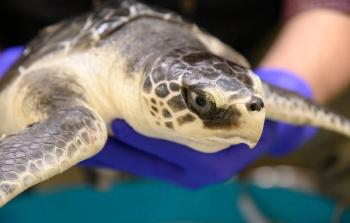
Immunosuppressive therapy in small animals (Proceedings)
Although newer therapies are being developed in humans that allow a certain targeting specificity, immunosuppressive therapy in dogs and cats is largely based on the use chemotherapeutic drugs.
Although newer therapies are being developed in humans that allow a certain targeting specificity, immunosuppressive therapy in dogs and cats is largely based on the use chemotherapeutic drugs. Liver and hematological toxicity are major limiting factors that often can be reduced with the use of appropriate drug combinations. Therapeutic protocols are largely empirical and further pharmacokinetic, efficacy and safety information are required to better use these drugs in cats. This review focuses on current safety and efficacy data of common and newer immunosuppressive agents in feline patients.
Objectives of the presentation
- To evaluate currently available agents and treatment protocols for immunosuppressive therapy in small animals, with particular emphasis on cats.
Relevant therapeutic points
- The use of immunosuppressive drugs is often chronic and toxicity is the major limiting factor of therapy.
- With the exception of glucocorticoids and cyclosporine, there are no formulations approved for animals. Human formulations are often expensive, although some (e.g. leflunomide) are becoming available in generic forms.
- Combination therapy is often more effective and less toxic given the differences in mechanism of action among drugs and the fact that they are effective at different stages of the cell cycle.
- Immunosuppressive therapy in cats is mostly reliant on the use of glucocorticoids or cyclosporine-glucocorticoid combinations. The adrenal and immune-related complications associated with long-term use of glucocorticoids propitiate the search for steroid-sparing treatment protocols.
- Newer drugs are available that may bridge this gap but need to be further explored before safe and effective protocols can be consistently implemented in cats.
- Standard methods to assess immunosuppressive effects in vitro are being explored1 that may help to optimize dosage regimens.
Drugs, dosages and indications
- Classic agents: These are drugs commonly used alone or in combination in the treatment of autoimmune diseases or in the prevention of allograft rejection.
- Glucocorticoids
- This is typically the first choice when immunosuppressive therapy is necessary.
- They exhibit multiple adverse and side effects with long-term use.
- Glucocorticoid anti-inflammatory action includes the inhibition of local chemotactic factors, the decrease in the infiltration of immunitary cells, the stabilization of endothelial cell membranes, the inhibition of proteases , and the inhibition of the synthesis of prostaglandins, thromboxanes and leukotrienes2,3.
- Prednisolone is typically used for long-term therapy and is administered every-other-day. Dexamethasone is often used for acute treatment, but is not recommended for long-term use given its increased potential for causing adrenal suppression.
- As a single agent, prednisolone does not prevent transplant rejection in cats. For this purpose it is combined with cyclosporine orally at 2.5-5.0 mg/cat every 12 hours. Interval is typically increased to 24 hours after 1 month of therapy and a few months later it is further reduced to half-dose before discontinuation.
- For pemphigus foliaceus (PF) it is initially administered orally at 2.2-6.6 mg/kg every 12 hours and tapered to the lowest effective dose on alternate days4.
- Cyclosporine
- By binding to the calcineurin-calmodulin complex in lymphocytes and blocking calcium-dependent signal transduction, cyclosporine prevents the synthesis of cytokines (IL-2) and the proliferation of T-cells5.
- It is specific for lymphocytes, so it does not suppress nonspecific immunity.
- Cyclosporine is less hepatotoxic in dogs and cats than in humans, even at high blood concentrations.
- Used for the daily treatment of eosinophilia granuloma complex (EGC) at 25 mg/cat6.
- For organ transplantation it has been used at 3-4 mg/kg q12h7.
- Target whole blood 12-hour trough concentration in cats is 250-500 ng/mL8, although recent studies indicate that whole blood measurements 2 hours after drug administration are better correlated with drug exposure and may be more appropriate reference for dose adjustment9.
- Cyclosporine is available in two oral human formulations that exhibit different systemic availability. The absorption of the microemulsion (Neoral) is greater and results in more predictable plasma concentrations than the olive oil based formulation (Sandimmune). Therefore, different doses are required for different products. A veterinary preparation similar to Neoral (Atopica) is available as microemulsion in capsules of 10, 25, 50, and 100 mg.
- Adding ketoconazole may allow reducing the dose of cyclosporine by half.
- Myelotoxic agents
- Cyclophosphamide
- Mechanism of action involves the alkylation of DNA during the S phase of the cell cycle.
- It affects both T- and B-cell, i.e. cellular immunity and antibody production.
- High potential for myelosuppression, alopecia, and GI toxic effects. Hemorrhagic cystitis caused by the synthesis of acroleine is also a major complication.
- Used for the treatment of immune-mediated hemolytic anemia (IMHA) and rheumatoid arthritis (RA) in cats at 6.25-12.5 mg/cat q24h 4 days/week.
- Chlorambucil
- Mechanism of action involves the alkylation of DNA during the S phase of the cell cycle.
- It affects both T- and B-cell, i.e. cellular immunity and antibody production.
- Although is it considered less toxic than cyclophosphamide in cats for the treatment of immune-mediated skin diseases in cats10, it may also cause myelosuppression, alopecia, and GI toxic effects. Chlorambucil lacks some of the adverse effects of cyclophosphamide, like hemorrhagic cystitis.
- Used for the oral treatment of EGC and PF in cats at 0.1-0.2 mg/kg q24h initially, then q48h.
- Methotrexate
- It inhibits folic acid reductase, affecting the production of purines and pyrimidines.
- In human medicine it is used for treatment of RA.
- it has been used in combination with leflunomide for the treatment of RA in 12 cats that were refractory to glucocorticoid and non-steroidal antiinflammatory treatment11.
- Newer agents
- Tacrolimus
- The mechanism of action is similar to that of cyclosporine, but it is 50-100 times more potent as an inhibitor of lymphocyte activation in vitro than that latter.
- Tacrolimus inhibits the expression of T-cell activation genes, cytokine synthesis, IL-2 and IL-7 receptors, and B-cell proliferation.
- This drug has been mostly used topically for atopic dermatitis.
- The oral pharmacokinetic profile in cats is highly variable and a clinically viable dose has not been determined.
- Survival time in cats with renal transplants treated orally at 0.375 mg/kg q12h for 14 days doubled when compared with untreated cats12.
- Toxicity decreases when combined with cyclosporine and when trough blood concentrations are below 15 ng/mL in humans.
- Sirolimus:
- Structurally similar to tacrolimus but mechanism of action does not involve calcineurin inhibition. Sirolimus blocks the action of cytokines and diverse cellular growth factors by affecting their signal transduction pathways.
- It also inhibits B-cell immunoglobulin synthesis triggered by interleukins.
- It has shown to be effective in animal models of autoimmunity.
- Although in vitro studies have shown adequate antiproliferative effects on feline lymphocytes, disposition, safety and efficacy information are lacking.
- Leflunomide:
- Prodrug that is metabolized by the intestinal mucosa to the active form.
- Inhibits pyrimidine biosynthesis and tyrosine kinases associated with growth factor receptors.
- The drug is less toxic in cats than in dogs, by virtue of the slower metabolism of the drug to a toxic metabolite.
- Orally administered leflunomide at 70 mg/cat once a week in combination with methothrexate (7.5 mg/cat) was effectively used to treat rheumatoid arthritis11.
- Toxic metabolite is excreted with urine, so renal impairment may increase toxicity.
- A generic human form is available, which reduces the cost considerably.
- Mycophenolate Mofetil
- It was developed as a nonmyelotoxic replacement for azathioprine in human transplant patients.
- There are anecdotal reports of the use of this drug for the treatment of myasthenia gravis, rheumatoid arthritis and renal transplant rejection in dogs, but not in cats.
REFERENCES
1. Archer T, Lunsford K, Mackin A, et al. Development of a flow cytometric panel of T-lymphocyte biomarkers to evaluate the immunosuppressive effects of cyclosporine in dogs. In Proceedings ACVIM Forum 2009; 742.
2. Hayashi R, Wada H, Ito K, et al. Effects of glucocorticoids on gene transcription. Eur J Pharmacol 2004;500:51-62.
3. Barnes PJ. Molecular mechanisms of corticosteroids in allergic diseases. Allergy 2001;56:928-936.
4. Rosenkrantz WS. Pemphigus current therapy. Vet Dermatol 2004;15:90-91.
5. Kuga K, Nishifuji K, Iwasaki T. Cyclosporine A inhibits transcription of cytokine genes and decreases the frequencies of IL-2 producing cells in feline mononuclear cells. J Vet Med Sci 2008;70:1011-1016.
6. Gauguère E, Prelaud P. Efficacy of cyclosporine in the treatment of 12 cases of eosinophilic granuloma complex. Vet Derm (Suppl 1) 2000;11:31.
7. Kadar E, Sykes JE, Kass PH, et al. Evaluation of the prevalence of infections in cats after renal transplantation: 169 cases (1987-2003). J Am Vet Med Assoc 2005;227:948-953.
8. Gregory CR. Immunosuppressive Agents. In: Bonagura JD, Twedt DC, eds. Kirk's Current Veterinary Therapy XIV. 2009;254-259.
9. Mehl ML, Kyles AE, Craigmill AL, et a. Disposition of cyclosporine after intravenous and multi-dose oral administration in cats. J Vet Pharmacol Ther 2003;26:349-354.
10. Helton-Rhodes K, Shoulberg N. Chlorambucil: effective therapeutic options for treatment of feline immune-mediated dermatoses. Feline Pract 1992;20:5.
11. Hanna FY. Disease modifying treatment for feline rheumatoid arthritis. Vet Comp Orthop Traumatol 2005;18:94-99.
12. Kyles AE, Gregory CR, Craigmill AL, et al. Pharmacokinetics of tacrolimus after multidose oral administration and efficacy in the prevention of allograft rejection in cats with renal transplants. Am J Vet Res 2003;64:926-934.
Table 1. Immunosuppressive Drugs Indicated in Small Animals
Drug
Indication
Dose Range (mg/kg)
Target trough (ng/mL)
Combination
Prednisolone
Cyclosporine
Renal allograft
S: 2-7.5 q12**
S: 2-7.5 q24
N: 0.5-2.5 q12
N: 0.5-2.5 q24
250-500*
250-500
250-500
250-500
Prednisolone
Predn + Ketoconazole
Prednisolone
Predn + Ketoconazole
Cyclophosphamide
Azathioprine
Glucocorticoid
Cyclophosphamide
Tracrolimus
Sirolimus
Mycophenolate
Leflunomide
2-6 mg/kg, 1-2 per week
*Troughs under 200 ng/mL associated to transplant rejection.
**S: Sandimmune, N: Neoral.
Newsletter
From exam room tips to practice management insights, get trusted veterinary news delivered straight to your inbox—subscribe to dvm360.




